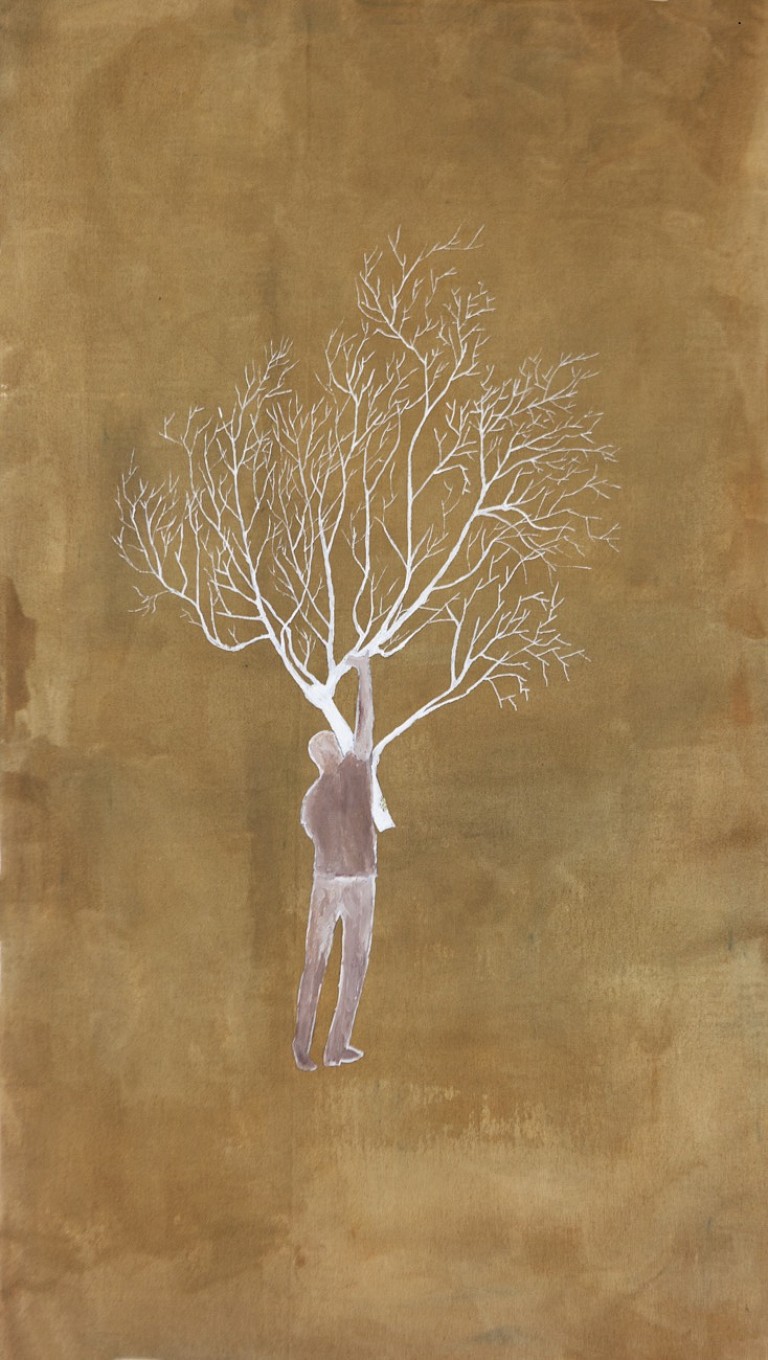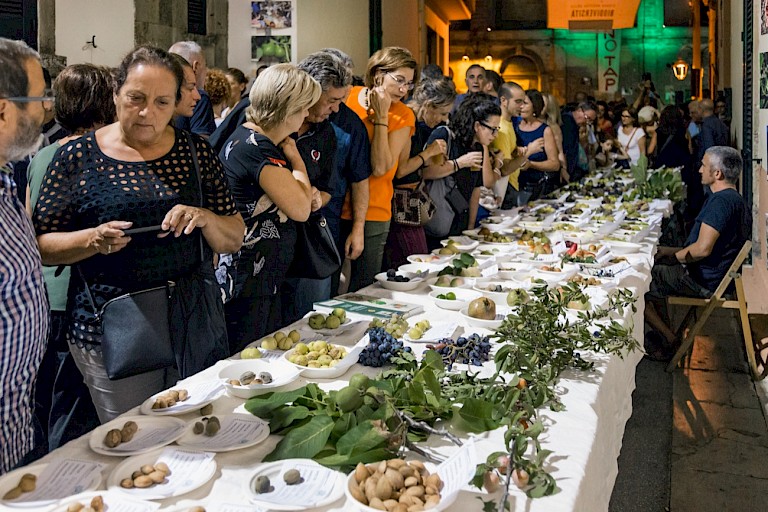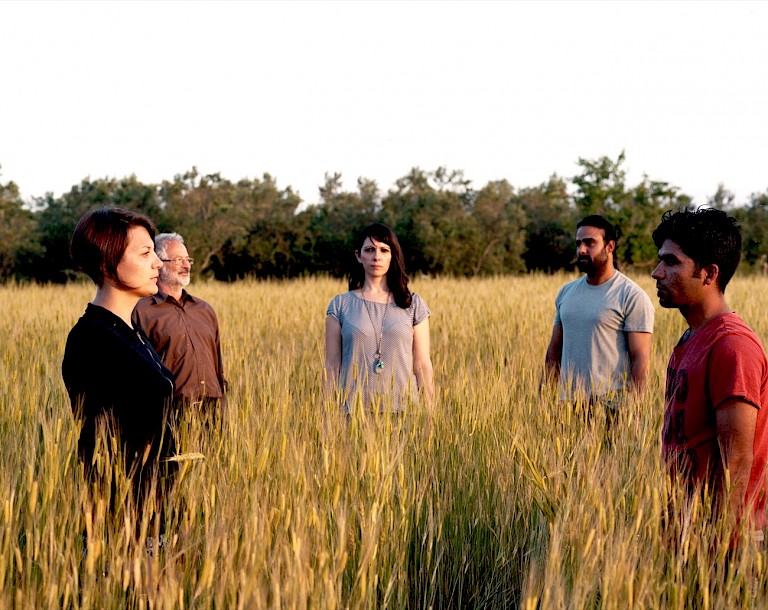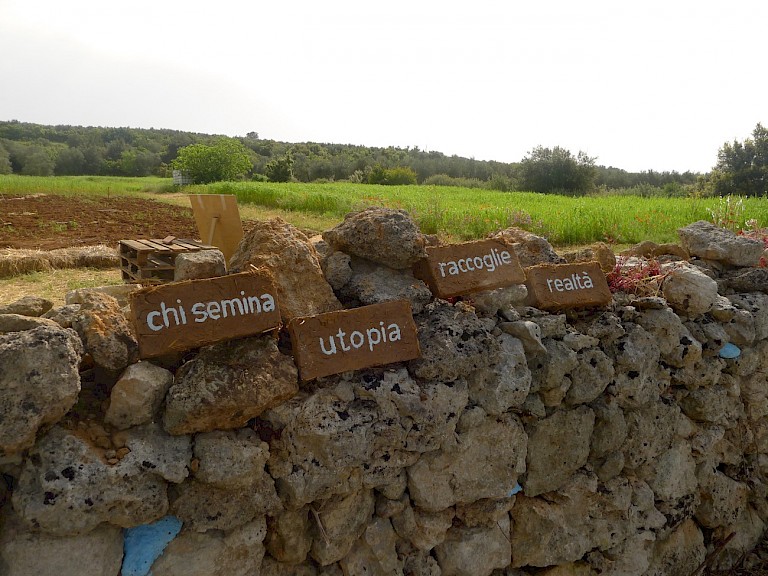



The project can be considered as an excellence example of art-led place-remaking on many levels. Its excellence resides in the plurality of his truly transformative artistic, methodological and epistemological research and its extraordinary impact on landscape, communities and local economy over the years.
In artistic terms, Coppola experiments his rôle of commoning artist, as he defines himself, by using « his own tools within real processes of transformation » and aesth-Ethical terms (Barbanti, 2022). In philosophical terms, he tries to imitate nature’s processes while overcoming the contemplative idea of nature imitation, in order to create operational mechanisms of what we may call a “re-generative mimesis”. This mechanism, is based on the acceptation that death is part of life, although implicitley it is still a tabu in our modern hyper-technologized societies, who chase the chimera of bio-cultural eternity. In social terms, the project engages actively local communities and social categories who are usually kept on the margins or just “informed” on territorial transformations but not concretely involved in the change: the project overcomes the anachronistic separation between active and passive forms of participation through experimenting third ways of co-learning in unprecedented large-scale community practices. This is possible thanks to the integration of art research with the inherited non-written knowledge and transdisciplinary scientific analysis, such as those coming from agro-ecology, genetics, botany, anthropology.
In economic terms, Casa delle Agriculture provides an important impulse to the local supply chain, operating a transition from the logics of competition to that of cooperation by building two infrastructures: The Community Mill (Il Mulino di Comunità) and the Inclusion Nursery (Vivaio dell’Inclusione). The Community Mill, is a multipurpose processing center for quality cereals and will serve to restore value to cereal and legume biodiversity to combat depopulation in the rural areas of Salento and to promote a healthy agriculture, that is, to practice food democracy. It is the first experiment of this kind in Italy. At the Community Mill, anyone is able to bring their own harvest and take advantage of a milling service at fair costs, to guarantee everyone the right to healthy and quality food. Everyone has access to it, as the stone mills are the only alternative for the production of quality and tasty flours. It is only this type of grinding that allows the germ, the most noble part of the seed, to be preserved. On the contrary, the industrial method processes larger quantities but refines, overheats and depletes the flours of vitamins and proteins. The Inclusion Nursery, results from the donation of the people’s lands of free loan for use, with even twenty-year contracts, where the Casa delle Agriculture collective started growing cereals, vegetables and minor fruits as like as a small biodiversity nursery by recovering, selecting and reproducing forgotten seeds. As explained by the artist, they were distributed to farmers to free them from the monopoly of agrochemicals, to convince them to return to natural agriculture without pesticides. It is called « Inclusion Nursery » because people with disabilities, migrants and the elderly also work there not only as an action for social justice, but equally for their extraordinary importance for our community and their precious non-written knowledge.
For this project, Luigi Coppola was awarded the Minimum Prize on the occasion of Arte al Centro 2021, a big annual event promoted by Cittadellarte -Fondazione Pistoletto. In 2023 he received, together with Casa delle Agriculture the fellowship “Visible” from Fondazione Zegna. Among the recent projects by the artist, which are to be considered in continuity with the Casa delle Agriculture, there is Ex-situ, a written and illustrated history “from plants, dominations, colonisations, extractive approaches” described in a free press, presented at Toxicity: the 7th Biennale de Lubumbashi, Democratic Republic of Congo. With this history, the artist refers to neo-liberal origins of traumas generating impoverishment, desertification, intoxication and loss of diversity, against which 12 local plants are able to oppose their natural action of extraction and, in some cases, stabilisation of pollutants, in order to regenerate the soils.
The Casa delle Agriculture (House of Agriculture) was born in a cultural context characterised by strong depopulation, as a result of a series of socio-economic choices that provoked some historical failures. After the collapse of the tobacco monoculture in the 1990s, due to strong competition from the United States, a new monoculture was adopted, although the economic impact on the territory was unknown. This choice led to a reduction in local complexity and biodiversity, and also created what we might call a “monolandscape”. More recently, the crisis caused by the uncontrolled spread of the bacterium "Xylella fastidiosa" has made the future even more uncertain. Xylella fastidiosa lives and multiplies in the lymphatic system, which is known for its extremely fast diffusion and polyphagy, without causing any pathological manifestations for about 4-5 years. It was discovered about ten years ago, affecting millions of trees and thousands of hectares of land, including the artist's own trees, but it seems unstoppable. It is an alien species for the region of Apulia, which has drastically reduced the national production of olive oil, which used to account for 37% of the national production, 85% of which was produced in the south of Italy.
Xylella is able to attack and spread for many years without any signs or symptoms, and by the time it becomes visible it is too late to act effectively because it has already spread over very large areas. In Salento, the reference area of the project, it became visible 10 years ago, but it had been active probably for 4-5 years before that. A problem that the authorities intend to solve by declaring around 20 millions diseased trees dead, in order to uproot them, although their roots are still alive, according to the principles of what we could call "economic presentism", since they are no longer immediately productive, and then to transplant other plant species of uncertain duration, since, as Coppola explains, any monoculture is inherently destined to die out and does not sufficiently produce either economy or diversification. The artist and Casa delle Agriculture team are trying to promote a holistic culture of relationship with the land, which seeks to overcome the reasons for the incessant reproduction of mistakes made in the past.




